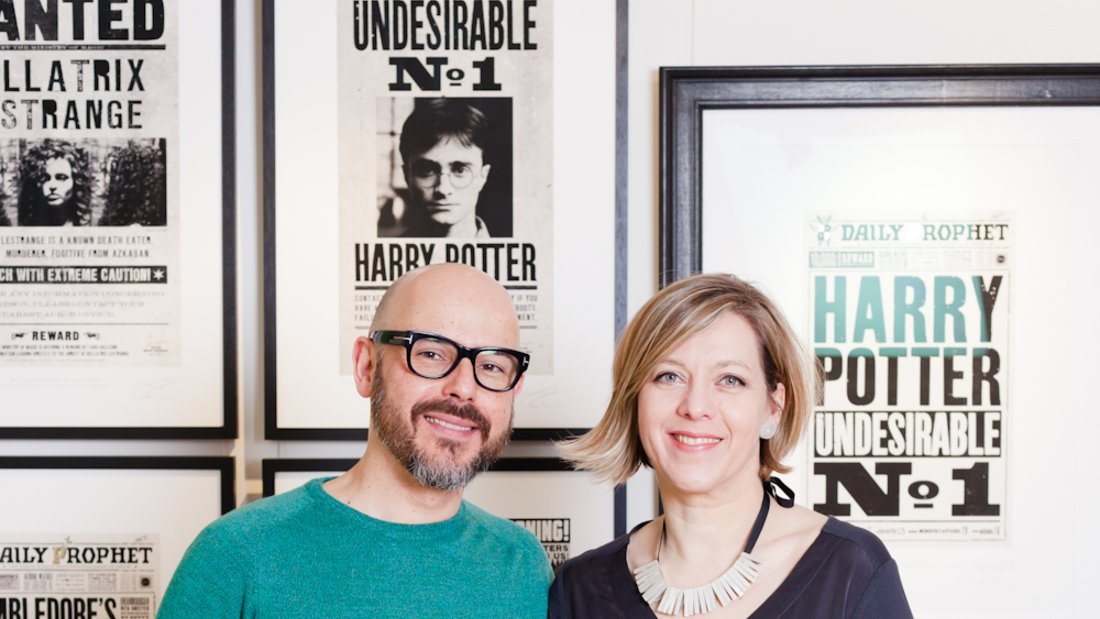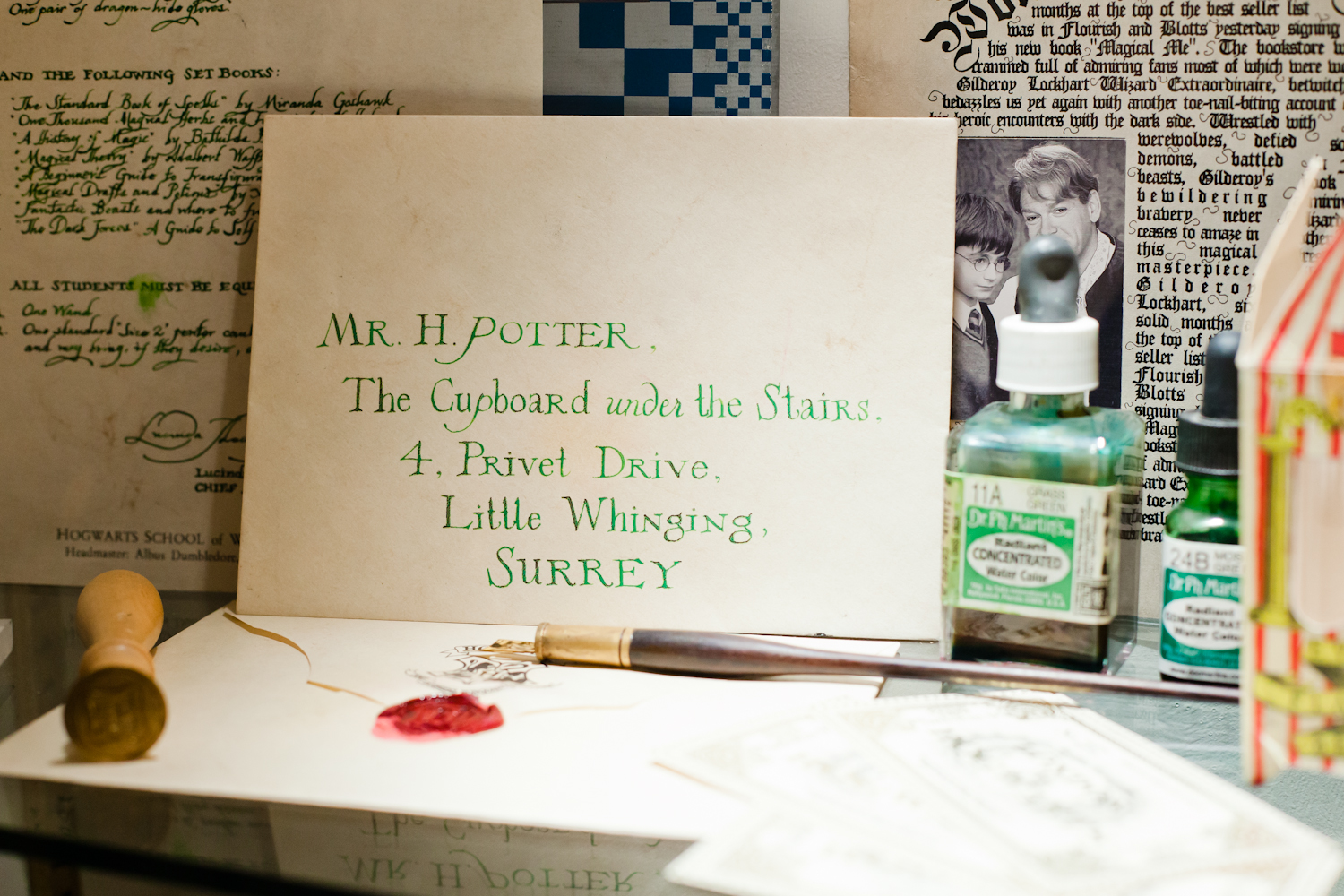Fantastic Ephemeras and Where to Find Them: A Session with MinaLima
I feel extremely sorry for neglecting this space for a while since I came back to Indonesia for data gathering and action research (which I currently try to compile here in a brief, hassle-less way). Now that I'm back in London, there are heaps of activities that I planned to do for the rest of this independent study period.
One of them is to make connections with stakeholders and learn from their experiences, which absolutely will help me with the question iterations and evolutions. I was delighted to get a chance to meet the graphic designers duo Miraphora Mina and Eduardo Lima of MinaLima which are known as people behind some beloved films such as Harry Potter and The Chronicles of Narnia (even though it's only a small portion for the latter, as they said). Before I actually meet them in person, I was struggling to get feedbacks from them as I can only contact them via their work email. I guess this is what they always call: serendipity?
Image 001: Eduardo Lima (left) and Miraphora Mina (right) of MinaLima. (Pottermore, 2016)
Currently, their works are displayed in an exhibition house called House of MinaLima, located at Greek Street in the West End of London just behind the Palace Theatre where Harry Potter and the Cursed Child is staged. Speaking of this, I made a review before in my personal blog that you can read here.
I attended their first newly established programme called MinaLima Monday, where we sat down together and share insights into the world of graphic design for film production (another realm that looks invisible in the creative industry, as they sauid) and publishing, anecdotes from their career journey, and also giving wonderful advices for aspiring graphic designers. I could say that the reason why I chose to associate with them is how they use ephemera [1] significantly as references and inspirations for their works.
Image 002: Harry Potter's Hogwarts acceptance letter, as designed by graphic design team MinaLima. (Pottermore, 2016)
Image 004: The Daily Prophet, designed by MinaLima (MinaLima Store, 2016)
Image 003: Props from the Harry Potter films, designed by MinaLima. (Pottermore, 2016)
The graphic designer duo emphasised the importance of research regarding finding the contextual values within every single visuals that they made. Their two recent projects 'Fantastic Beasts and Where to Find Them' sets in 'Roaring Twenties' New York, whereas 'The Crimes of Grindewald' revolves around Paris in the late 20s. It was a big challenge for them to build a whole new fictional world (in this case the Wizarding World) in a certain time frame, so a big fat amount of research is certainly essential, basically for every department including graphic design in the film industry.
Mira adds that being thoughtful about every little details in our lives will absolutely improve our sense of taste in design. She recalls herself as "Ephemeras rescuers" by keeping records of her findings and giving outdated visuals chances to "reincarnate" into newer, contemporary versions of themselves.
Plus, it turns out that they use Pinterest as one of the digital sources of inspirations and references, one common thing that I proud to share with them, haha. Beside that, they always rely of found objects and records from published books and prints.
In connection with the project I'm currently doing, meeting MinaLima in person gave me clarification on how visual preservation can help graphic designers and also researchers in doing their job. Building a platform where visuals are preserved and curated ease them to get some works done. There are, indeed, interwoven lines between graphic design and visual preservation and curation. Perhaps it's a way that this project serves as another form of "Ephemera rescue"?
The author surrounded by her inspirations. (Personal documentation)
Some other insights that I got from the session (which doesn't quiet fit into the specific realm of my research project but I'm writing it down anyway):
- Eduardo emphasises to do what we're interested in as a job, because life's too short for not doing what you're love. I could reflect this with my question that keeps evolving and gets into the direction of fields that I actually would love to do in constant, daily basis: curation, preservation, and graphic design.
- I keep forgetting and get surprised again and again knowing that Mira is a alumni of Central Saint Martins. This sounds trivial, but it gave me some knowledge about finding stakeholders, experts, and audiences which can start from the smallest community (e.g. your own classmates) which eventually can make its way into larger scale.
- When I asked them to pick one favourite artworks that they ever made, Eduardo answered "The Daily Prophet" while Miraphora said "The Marauder's Map". One of the biggest challenge they ever face is to invent their own style of "Wizarding World Copywriting" and pitch them to JK Rowling. I see how both copywriting and pitching skills are essentials for creators.
- Speaking about idealism, they're known to be strict to their own idealism. Sometimes, someone's visual style are highly determined from it and it helps creator to stands out.
Image Sources:
001: Pottermore. Graphic designers Eduardo Lima and Miraphora Mina. 16 May. 2016. Pottermore. Web. 07 Aug. 2018.
002: Pottermore. Harry Potter's Hogwarts acceptance letter, as designed by graphic design team MinaLima. 16 May. 2016. Pottermore. Web. 07 Aug. 2018.
003: Pottermore. Props from the Harry Potter films, designed by MinaLim. 16 May. 2016. Pottermore. Web. 07 Aug. 2018.
004: MinaLima Store. The Daily Prophet, designed by MinaLima. 2016. House of MinaLima. Web. 07 Aug. 2018.
Footnotes
[1] Ephemera (ἐφήμερα ): The term ‘ephemera’ covers a wide range of documents including leaflets, handbills, tickets, trade cards, programmes and playbills, printed tins and packaging, advertising inserts, posters, newspapers and much more.
Essentially produced to meet the needs of the day, such items reflect the moods and mores of past times in a way that more formal records cannot. Collectors of printed ephemera vary in their approach. Some focus on the ephemera of a particular trade or profession, others are interested in its social or graphic history. Other ephemerists collect documents simply as evocative reminders of the past.





